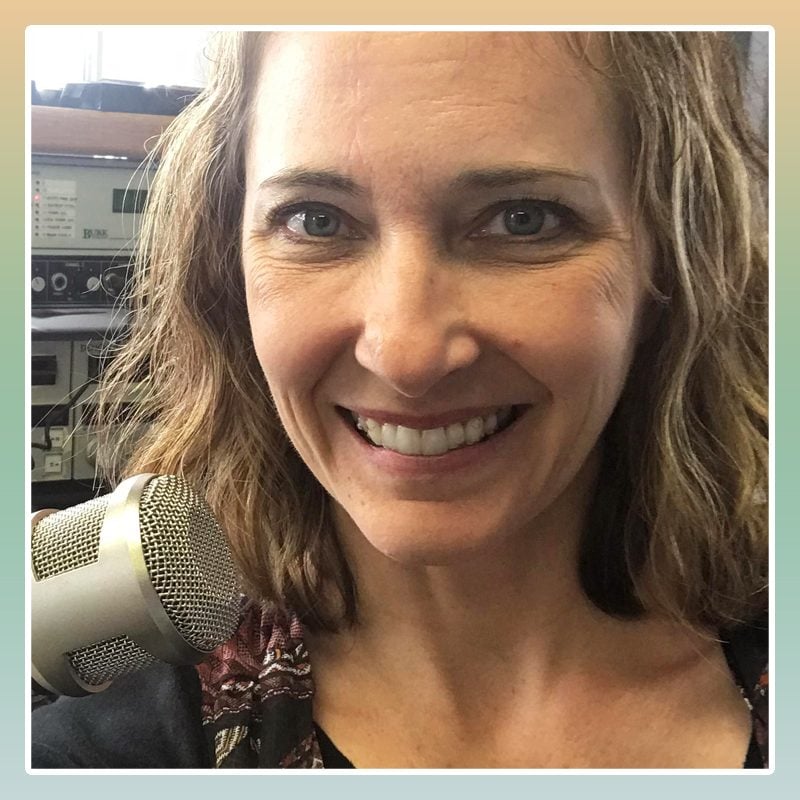This Everyday Habit Gave Me Cancer—and Nearly Ruined My Face
Updated: Feb. 19, 2021
You might think that "bronzed" look in summer makes you look healthy, know that a suntan can come with a higher price than you wish to pay.

When Janet, 42, suddenly noticed a bump on the side of her nose while looking in the mirror, she assumed it was a harmless pimple. Two days later, things got weird, the iHeartRadio host in Oklahoma City tells Reader’s Digest: “It just sort of self-exploded, and then it began bleeding excessively,” she recalls.
For the next three weeks, Janet watched as the spot on her face scabbed over and bled repeatedly. Finally, her husband convinced her to go to the doctor. “He’s a firefighter, so he’s seen everything. I really thought the doctor was going to laugh that I came in for a zit,” she explains. To her disbelief, her doctor referred her to a dermatologist. “My primary care doctor said he was willing to bet I had basal cell carcinoma. The dermatologist confirmed it with a biopsy. I was shocked,” she says. Make sure you know the different skin cancer symptoms when you’re checking your own body.
A tanning bed aficionado since her teens and an avid runner who disregarded sunscreen, Janet was especially susceptible to skin cancer—which happens to be the most common type of cancer. “I begged my mom to sign permission slips for tanning beds when I was 16, and I tanned before every vacation. Looking back, I’m not surprised I got it,” she explains. Tanning and not using sunscreen are just two common cancer risks—don’t ignore these surprising skin cancer risks either.
After undergoing a separate surgery to remove a dime-sized chunk of her nose, Janet’s next stop was a plastic surgeon to restore her appearance. Her options were limited: “A skin graft isn’t desirable on the face because the color never matches,” she says. “My doctor said I wouldn’t be satisfied with it, and recommended the flap surgery instead.” For this procedure, the surgeon would transfer skin from a discrete spot on her forehead to patch her nose and then—prepare yourself—route a vein from her forehead to supply the patch until the skin can survive on its own. And that vein is left hanging from the forehead and connected to the nose in a sort of loop in front of her face. Janet asked her surgeon what the recovery was like. “He said that I could return [to work] after a few days, but most people take three weeks off to heal because they don’t want to leave the house looking that way,” she recalls.
Janet chose the flap surgery and immediately afterward understood why most people take the three weeks at home. “I cried almost every day, it was such a painful open wound—and emotionally it was just a very dark time,” she recalls. “I tried to go shopping at Target, and people would just stare—or worse—leave the aisle entirely,” she says. Tired of the curious stares from strangers, and even those of friends, Janet went “live” on Facebook to explain her new look. “After the video, I received so many notes from others undergoing the same treatment who felt comforted that they weren’t alone,” she recalls. It was exactly the push she needed to become more vocal about her diagnosis. “It’s heartbreaking to me to think that others going through this feel like they need to hide,” she explains.
After Janet had her final stitches and the vein removed, she says, “I remember leaving the doctor’s office and feeling like I made it.” Today, Janet is cancer-free and visits her dermatologist twice a year. She has partnered with the Miles Against Melanoma Foundation and has found educating others to be rewarding. Her words of encouragement to those facing a skin cancer diagnosis are simple, yet memorable: “You will feel the sunshine on your face again—just wear your sunscreen.” That being said, make sure you know these 51 things dermatologists need you to know about skin cancer.
